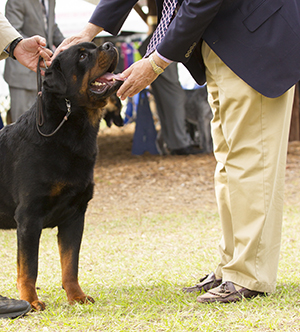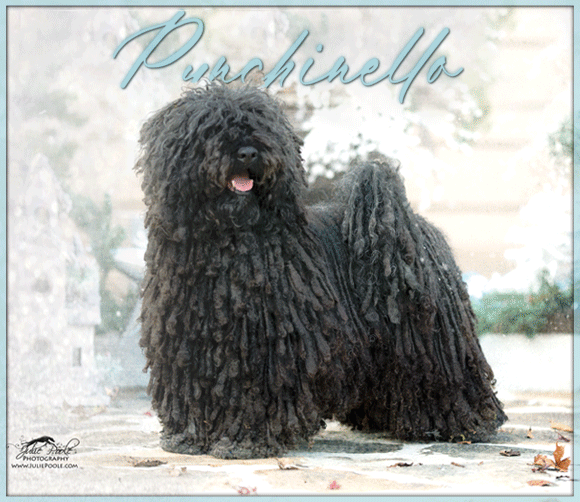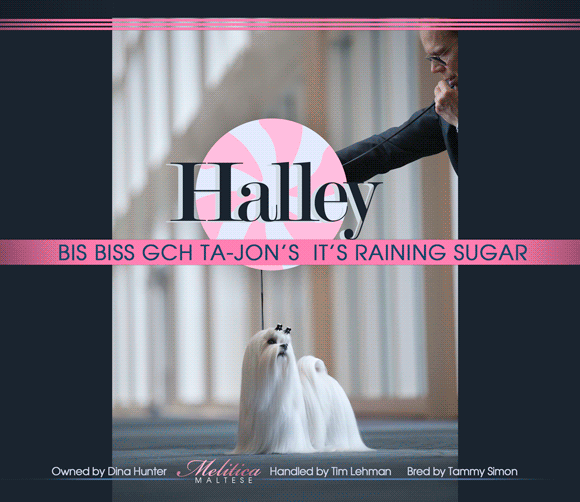The Art of the Critique – A Bold New Endeavor
by Dr. Al Grossman
From the archives of The Canine Chronicle, 1999
One Hundred and Seventy-Five dogs per day pass before a typical judge. They have less than 2 minutes to evaluate each dog, place the class, mark their books, and award the ribbons. Little information passes between the judge and the exhibitor. And we wonder why we have so many disgruntled exhibitors. Most neophytes and even experienced breeders do not know why the judge placed them the way he did.
Back in the days when I was a practicing shrink, I found the level of frustration and anxiety of people who were in pressure situations to be relatively high, often because there was no real communication to let them know a problem was approaching. “If only they let me know,” was the plaintive cry. Perhaps if we judges let our exhibitors know their stock was running into trouble, we would not have such a high level of frustration in exhibitors and cries of foul play in judging.
Today we find ourselves in a catch 22 situation. AKC guidelines say we judges should not speak to exhibitors except for the usual pleasantries – good day, yes, it is a hot one, etc…This makes it kind of difficult to sneak messages under the table to inform the exhibitor of our honest opinion of their stock. I believe we need to inform the exhibitors better, or we will continue to see a decline in show entries and breeding stock.
It has been my good fortune to have lived in nearly all parts of this country and to belong to dog clubs in each locale. What do I see besides friendly people trying hard to have their breeding program and their club succeed; I see the graying of the sport. Clubs with few new members and a membership seldom under the age of 60. I see clubs struggling to get enough volunteers to man the necessary committees and to put on successful shows. However, I also see all-breed clubs with bulging treasuries against a rainy day that never comes. Hell, it would have to have a Noah’s Ark type of rain to wipe out some of those balances. Perhaps the monies could be spent or invested more wisely in good local PR for Pure-bred Dogs or educating local exhibitors.
I think I have a possible solution for many of those ills, “The Informed Critique”. WHAT IS AN INFORMED CRITIQUE, you ask? Well, it is certainly not the lick and a promise type so often found in those we write in the English dog magazines. Those are too short to be a great help to a breeder. They are also not those we often see given on the European continent. Of those I wish I had seen less. In a ring next to mine, an experienced judge comes to ringside and gives the ring secretary a sheet with 7 statements. When going over a dog, the judge will tell the secretary, number 4, number 3 and number 7. These are canned critiques that are supposed to fit all dogs. Really!
The practical solution is for AKC to trust its judges and train them to do a properly informed critique. The informed critique should be a head to tail inspection of the dog, citing its good and bad points and, on balance, rating the dog on a 10-point scale. There are lots of ways of explaining what you see as you go over a dog. There is no need to attack needlessly, nor should the judge sugar coat their comments. There is the old standby, “The Sandwich Technique”; say something good, sandwich in some deserved criticism, and end with something good. One need not say, “with a muzzle like that, she could drink out of a coke bottle.” It really would be nicer to say, “I would like to see a little more squared-off muzzle with deeper flews.” The exhibitor would thank you for that.
Let’s do what I consider a proper critique of a Cocker Spaniel as an example. The dog appears to be of good size but under the standard. The head is appealing with large dark eyes and good stop. I would prefer not to see the red haw in the right eye. The length of muzzle is proper and in proportion to the distance from the stop to the occiput. The jaws are nicely squared off. I would like to see the shoulders laid back more to give a smoother line of the neck to shoulder blending. I would also like to see a bit more length in the upper arm. The dog’s fore chest is adequate and the chest comes down to the elbows which turn neither in nor out.
“The back is short but it would help the outline if the dog were a bit shorter in the loin. The tail is set on correctly and is of adequate length. There is a bit too much angulation in the stifle which tends to make the front and rear out of balance. Good, strong, well let down hocks. Overall the dog makes a nice outline but I would like to see less coat as this is considered a sporting dog. Overall rating: 7.”
Now that wasn’t too painful, and it certainly gives the exhibitor something to work with. He knows a 7-point rating means he has a nice dog but the 8’s, 9’s and 10’s will beat him out if present.
I vividly remember judging the Paris International show. Americans are seldom invited to do this one, maybe it’s because we do not have the experience in doing critiques their way. In France you cannot become a Champion of Beauty until you win at the Paris show. It makes for great entries.
When I presented myself to the show chairpersons, I was told I had an entry of 50 dogs. When I showed my disappointment at such a meager entry at such a prestigious show, I was told that no judge was allowed to judge more than 50 dogs. When I asked my interpreter why that was, she gave a fantastic explanation. “Each judge must first evaluate each dog and rate them as excellent, very good, good, and poor and do a critique. Then only the dogs evaluated as excellent or very good come back to compete for placings…” I told her I had done that in many European countries and that would leave plenty of time left over. Then came the cruncher “but monsieur, when you have finished each class, all the exhibitors in the class, regardless of the ranking, may then speak with the judge and ask their full opinion of their dog, how it should be bred and any other questions they may have. That was the longest I have ever taken to judge 50 dogs. From 9 AM to 4:30 PM. What a long but informative day!
Ok, this brings us down to an action plan. In order to be able to do informed critiques, AKC will (1) have to change the current guidelines, (2) working with the judges’ associations, develop a plan to build the necessary skills to do these critiques, (3) develop a workable way of implementing such a plan. Here are the positive things this plan will accomplish:
1. Bring about better-informedmed exhibitors.
2. Reduce the complaints about judges.
3. Bring new and interested people into the sport.
4. Increase registrations as new people become involved.
5. Enhance AKC’s reputation as a governing body that is with the times.
6. Create, within AKC, a judge’s education department; the necessary staff to work with judges’ associations to implement the plan.
7. Because the implementation of this plan will create the need for judges, more judges now doing very few assignments and provisional judges will have a greater opportunity to hone their skills.
Are we bold enough to strike out and try something new?
Short URL: http://caninechronicle.com/?p=195347
Comments are closed














